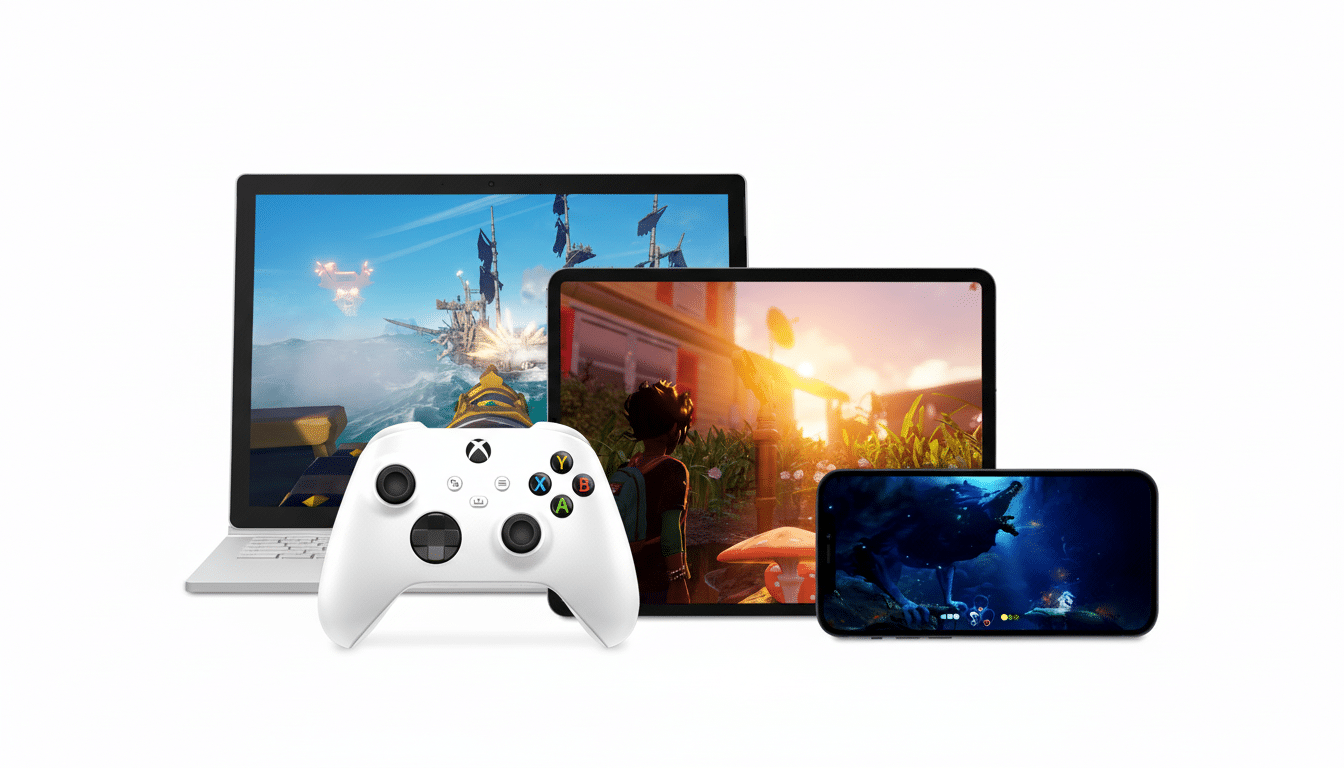Microsoft is figuring out how to offer a no-cost, ad-supported version of Xbox Cloud Gaming, according to reporting from The Verge, which would allow people to stream certain titles without paying a subscription fee. The plan as outlined by people familiar with the company’s testing focuses on short video ads that would run ahead of play sessions and time-limited access, to avoid incurring huge infrastructure costs.
How Microsoft’s free Xbox Cloud tier would likely work
Internal tests suggest a relatively straightforward flow: watch a short pre-roll ad — supposedly around two minutes or less — and you’re playing. The free catalog is slated to feature a rotating mix of participating Free Play Days titles, some Xbox Retro Classics, and even titles you already own that are included in cloud gaming. There are probably session length caps, as other cloud providers do to control non-paying traffic.

Microsoft hasn’t announced public specifics yet, but it stands to reason that you would expect the experience to play out across existing Xbox Cloud Gaming surfaces — browsers, mobile devices, smart TVs, and maybe even consoles for “try before you install.” Frequency of ad exposure, regional availability, and parental controls will be important variables to monitor, particularly with the company’s safety and privacy commitments in mind.
Why Microsoft is pursuing a free cloud gaming tier
Cloud gaming lives and dies by reach, and nothing removes friction like a free on-ramp. An ad-supported tier widens the funnel for Game Pass and provides a simple taste of instant play on devices they already have. It also helps offset price moves recently made across the various Game Pass tiers by providing a clear on-ramp for cost-conscious players, who may eventually still convert to paid plans with better quality, longer play sessions, and access to more games.
Most important for Microsoft is that it has the ad tech to pull this off. With the Xandr purchase and Microsoft Advertising, the company can place and measure premium video spots, apply brand-safety controls, and tap demand from big advertisers. That stack could potentially make pre-roll monetization economically viable against GPU time on Azure — the core cost factor behind every streamed minute of gameplay.
Scale is the prize. More than 20 million people have tried Xbox Cloud Gaming, Microsoft has said, and analyst firms such as Newzoo and Omdia are projecting a multibillion-dollar boom in cloud gaming over the next few years. A free, ad-supported tier is an explicit attempt to speed that trajectory by tearing down the paywall.
What it means for players and game developers
If you’re a player, the upside is access. You can tap below and start playing with no downloads, try new releases as part of Free Play Days, or even go back to a retro title. The trade-offs will be advertising, potential queuing, restrictions on session length, and probably reduced default quality. Paid subscribers would still receive preferential access and higher-quality streaming.

For developers and publishers, one selling point of an ad-supported tier is incremental reach — such as in markets with low penetration of high-end hardware — and a new revenue share linked to ad impressions.
The main obstacles to this model’s success will be ad fill rates, targeting quality, and session cadence. Services such as GeForce Now have shown a free tier can coexist with premium plans if session length and priority are gated hard enough; Microsoft is adding an even clearer monetization layer by feeding it with video ads.
The competitive cloud gaming landscape and its risks
Cloud competitors also take varied paths: GeForce Now has a free tier with time limits and waiting lists, while Amazon Luna relies on bundles for Prime members. And beyond gaming, ad tiers are entering the mainstream — Netflix announced that it has tens of millions of monthly active users on its less expensive, ad-supported plan — proof positive that advertisers will pay up for premium streaming content where subscribers make compelling audience numbers.
The risk is economics. The cost of delivering a two-minute ad must cover enough GPU minutes to make the session worthwhile, especially during peak usage. And Microsoft has to do all this while fighting against cannibalization of the paid plans, maintaining low latency, and not running overly intrusive ad loads that will ruin the experience. Reasonable boundaries, intelligent upsell prompts, and reliable quality are likely to be influential.
What to watch next as Microsoft tests a free cloud tier
Expect an official announcement to come detailing the regions, eligible games, session caps, and video ad partners. Keep an eye on the way Microsoft formats teen and family accounts, whether streaming quality is limited to 720p or 1080p for the free tier version of xCloud, and how often ads are shown. If the rollout goes well, you should also expect more experimentation — from dynamic ad pacing to limited-time sponsored access around big releases — to flip casual, ad-supported players into long-term Game Pass subscribers.

